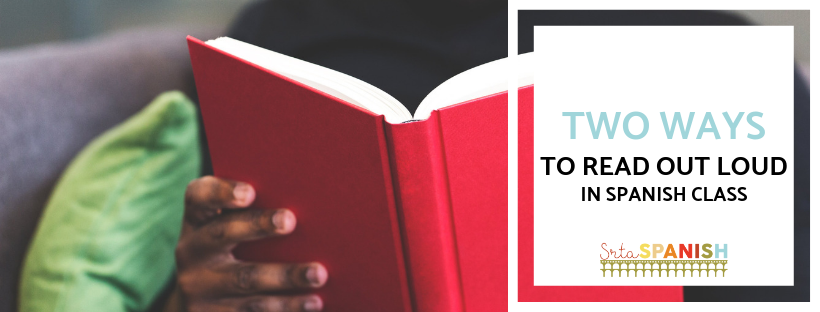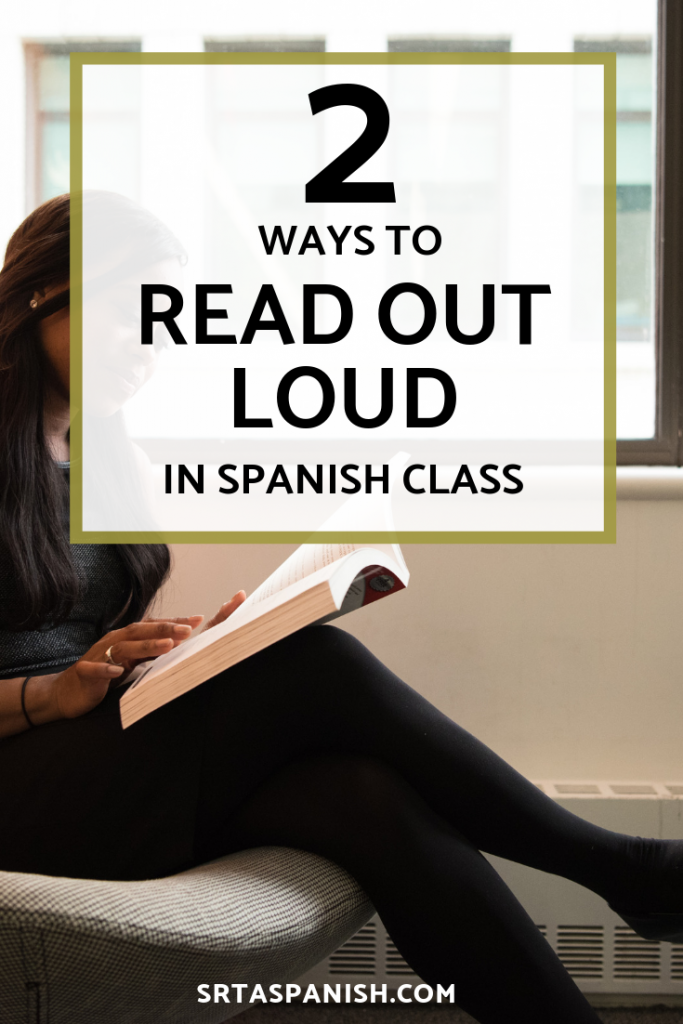
In the journey of switching over to more comprehensible input based activities and resources, I’ve discovered one really key thing:
95% of my activities are geared towards reading or re-reading.
(no, that’s not a scientifically measured number, but I’m pretty sure it’s 100% true).
We know that reading is important. Getting students to read meaningful language helps them acquire that language. It’s why we include FVR in our classrooms as a part of weekly routines!
Two of my favorite ways to start off a new story are Choral Translation and Volleyball (sometimes called Ping Pong) Translation. They’re both very simple and basically zero prep!
Both of them involve someone reading the target language text and someone (or multiple someones) translating it. The purpose of the translation is to check for or verify understanding. Both of these are activities I learned at the TPRS conference I went to last spring!

Choral Translation
Need: a text, either printed for each student or projected where everyone can see
I often do this at the very beginning of introducing a new story. I read the Spanish version and have students read or translate a text sentence by sentence as I go. I listen for clarity.
For example:
Profe: Hay un chico. Clase: There is a boy.
Profe: El chico es alto. Clase: The boy is tall.
If it rings out clearly, we move on. If I hear stumbles, or it gets oddly quiet, we pause on a word, or check for clarification.
Profe: El chico lleva los jeans azules.
Clase: The boy wears blue jeans. // The boy wears jeans blue.
Things like this happen a lot. I’m not worried about word order during choral translation, so the first few times I’ll clarify that I don’t care if you said blue jeans or jeans blue because the meaning is there. If the class as a whole kind of stumbles, I’ll rewind to the part that wasn’t clear and ask about a specific word, or I’ll just state the meaning and we’ll redo the sentence.
Volleyball (Ping Pong) Translation
Need: a text, either printed for each student or projected where everyone can see
*It also makes life easier if you happen to have an even number of students, but it’s not the end of the world if you don’t. Just make sure you’re clear about how the group of 3 should work!
Volleyball translation works the same as choral translation, except the students are working in pairs. Partner 1 reads a sentence in Spanish, then Partner 2 translates the sentence to English. Then, Partner 2 reads the next sentence in Spanish and Partner 1 translates.
For example:
Partner 1: Hay un chico. Partner 2: There is a boy. El chico es alto.
Partner 1: The boy is tall. El chico lleva los jeans azules.
The pattern would continue with Partner 2 translating and moving on throughout the story.
A few things to help this run smoothly:
- We usually do this with a timer on the screen. I tell students even if they reach the end they need to re-read the story until the timer runs out.
- The “Ask 3 Before Me” rule fits nicely here. I tell students if you don’t know a word, ask your partner. If your partner doesn’t know, ask the group around you. If your group doesn’t know, then you can ask Profe.

Notes
I don’t do these activities with EVERY single reading, but we probably do one or the other at least once a week. They’re a really easy way to check for understanding, and get lots of repetition in with a story. They’re also super low prep! The partner variation allows for students to read out loud in a low-stress environment. One on one is much less scary than reading in front of the whole class.
Have you tried either of these activities with your classes? Which is your favorite? Do you have any questions about how they work? Drop a comment below, or come find me on Instagram!


I’ve been using choral translation without having a name for it. Just seems the logical way to go.
Thank you for sharing! I love your ideas! I have done read-aloud and the volleyball ping pong with cognates before, just did not give it a name. I love the concept of giving it a name, especially like volleyball ping pong because the students will associate the activity with fun…sport…game!
and games are always fun! 🎉